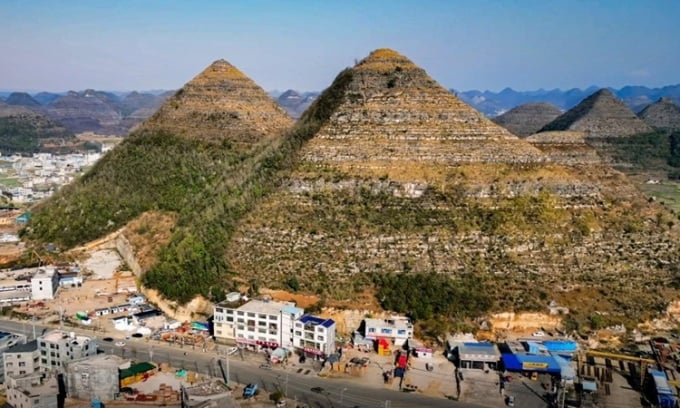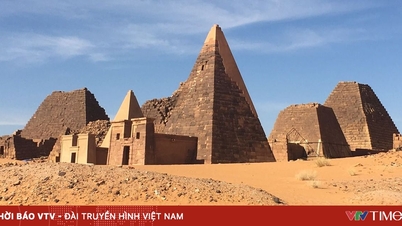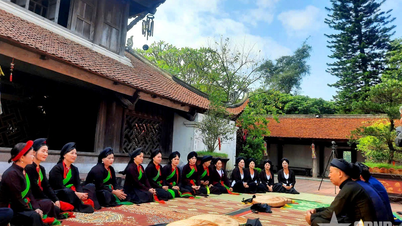China The pyramid-like shape of the mountains in Guizhou is the result of natural erosion over hundreds of millions of years.

Pyramid-shaped mountains in Guizhou. Photo: Weibo
Amidst the lush green landscape of Guizhou Province, China, are a series of mountains that look strikingly like Egyptian pyramids. The images have caught the attention of many social media users around the world and sparked a debate. Some speculate that the mountains in Anlong County contain tombs of ancient emperors while others are convinced that they were created by some mysterious force, the Global Times reported on March 21.
However, Professor Zhou Qiuwen, a geologist at Guizhou Normal University, offers a scientific explanation behind the formation of these unique mountains. According to Zhou, the series of natural "pyramid" in Anlong County are not man-made or ancient tombs. Instead, they are a testament to the miracle of creation.
Guizhou Province, located in southwest China, is renowned for its natural beauty and diverse landscapes. The average elevation of the province is around 1,100 meters, with 92.5% of the area being mountainous. The region has many mountain ranges with steep peaks and deep valleys, stretching across the province.
The province is characterized by karst topography, formed from soluble carbonate rocks. The conical shape of the mountain is the result of the dissolution of the rock formations. Vertical erosion by water causes the initially widespread rock mass to be fragmented into individual blocks. As the erosion continues, the rock at the top is significantly dissolved, while the rock at the base of the mountain is less affected. The result is a mountain with a sharp peak and a wider base.
Likewise, the layered shape of the mountain is related to the characteristics of the rock. The mountains in Guizhou are made of dolomite rock that is more than 200 million years old, from a time when the area was mostly underwater. This type of rock forms in the sea, when minerals dissolve in water and crystallize into solid rock. Due to periodic changes in climate, geological structure, and many other environmental factors, the rock formation process is repeatedly interrupted and restarted. This creates the distinct layered rock.
According to Zhou, the layers on the rock surface are also the result of natural erosion. Some of the original rock surfaces had small cracks. The water eroding between the cracks was not strong enough to dissolve the entire rock mass, but it was strong enough to fragment it, creating a layered appearance.
An Khang (According to Global Times )
Source link


![[Photo] Dan Mountain Ginseng, a precious gift from nature to Kinh Bac land](/_next/image?url=https%3A%2F%2Fvphoto.vietnam.vn%2Fthumb%2F1200x675%2Fvietnam%2Fresource%2FIMAGE%2F2025%2F11%2F30%2F1764493588163_ndo_br_anh-longform-jpg.webp&w=3840&q=75)













































































































Comment (0)